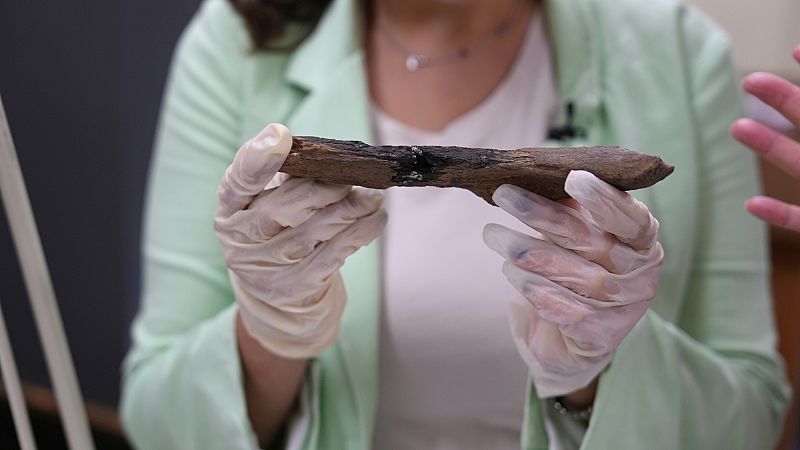
Archaeologists have unearthed what appear to be the oldest known bone instruments, which date back about a million years earlier than previous findings.
This discovery indicates that early humans possessed more sophisticated tool-making abilities than was earlier believed.
These 27 fossilized remains, transformed into tools approximately 1.5 million years ago, are reshaping our understanding of early human technological development.
The collection discovered in Tanzania's Olduvai Gorge offers the earliest proof of intentional creation of bone tools by early hominins.
Crafted from the robust thigh bones of elephants and hippopotamuses, these tools indicate that ancient humans had developed more sophisticated tool sets than earlier believed.
Scientists have established that basic stone instruments date back 3.3 million years. However, bone tools were thought to be an invention of more recent times, up until now.
The artifacts, which remain in excellent condition with some pieces reaching up to 40 centimeters, exhibit evident indications of deliberate crafting.
When they were first made, our ancestors inhabited the perilous hunter-gatherer world across the plains of the Serengeti region, an area brimming with animal life.
They created them utilizing a method akin to the production of stone tools, achieved by detaching tiny flakes to create keen edges, showcasing advanced skillfulness.
Dr. Christine Adhiambo Ogola is an archaeologist affiliated with the National Museum of Kenya. She did not participate in the research.
"Bone instruments are relatively rare due to their tendency to decay. Therefore, even though there might be numerous instances of them throughout history, only a few remain. In contrast, stone tools persist longer, which is why they are more commonly found," she explained.
These implements were probably utilized as hand-held axes for dismembering animal carcasses, mainly scavenged remnants of elephants and hippos.
Unlike subsequent implements, these were not attached to handles or employed as spears.
Scientists claim that the consistent choice of bones, mainly big limb bones from particular creatures, indicates that ancient humans intentionally looked for high-quality raw materials to craft their tools.
"We can't precisely determine when they began utilizing bone tools since it’s possible that these implements were used even earlier. Given what we know about chimpanzees employing such tools, it suggests that human beings at a similar stage of evolution would have been capable of doing the same," explained Ogola.
Consider this from a temporal perspective. When did humans reach that stage? It might have been as far back as 4-5 million years ago.
This finding predates the emergence of Homo sapiens by over a million years. During this period, at least three distinct hominin species inhabited the area, namely Homo erectus, Homo habilis, and Paranthropus boisei.
It remains uncertain which species created these tools; however, experts indicate that the discoveries imply early humans weren’t merely responding passively to their surroundings. Instead, they appear to have been deliberately strategizing about how they crafted their tools and carefully choosing materials for specific intended uses.
The finding, reported in the journal Nature, offers fresh understanding of the developing intellect and flexibility of our ancient forebears.